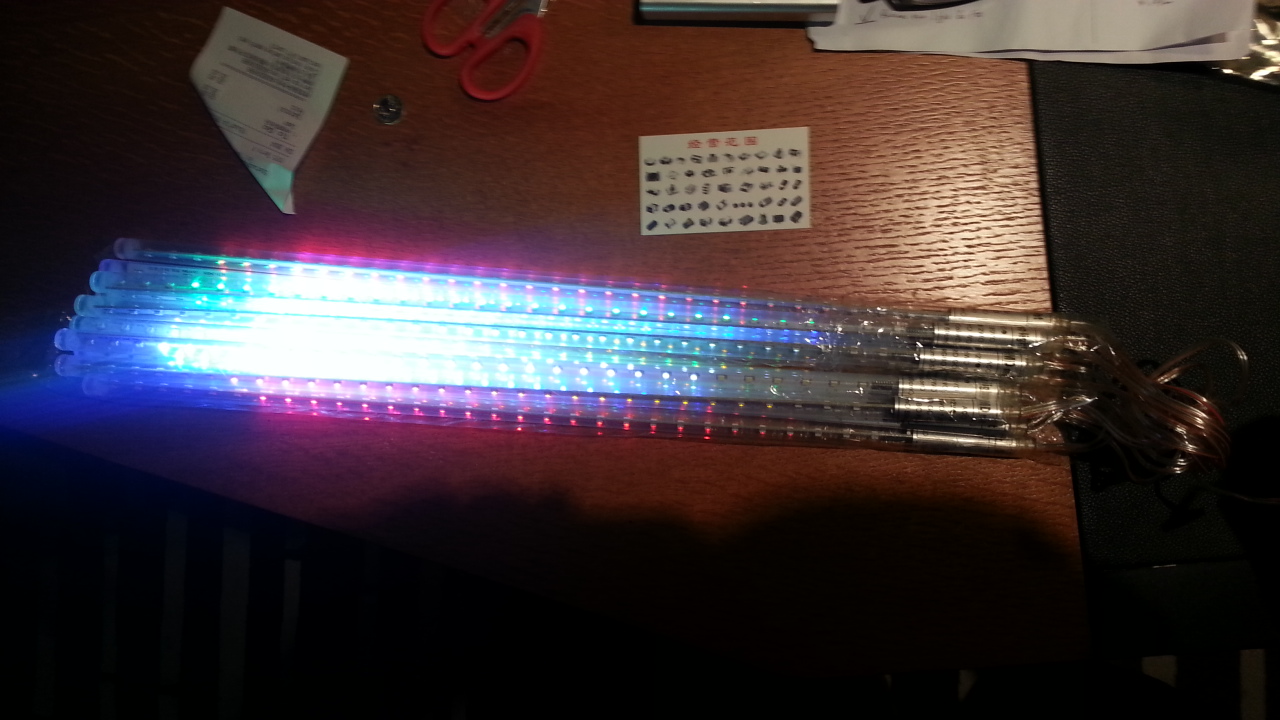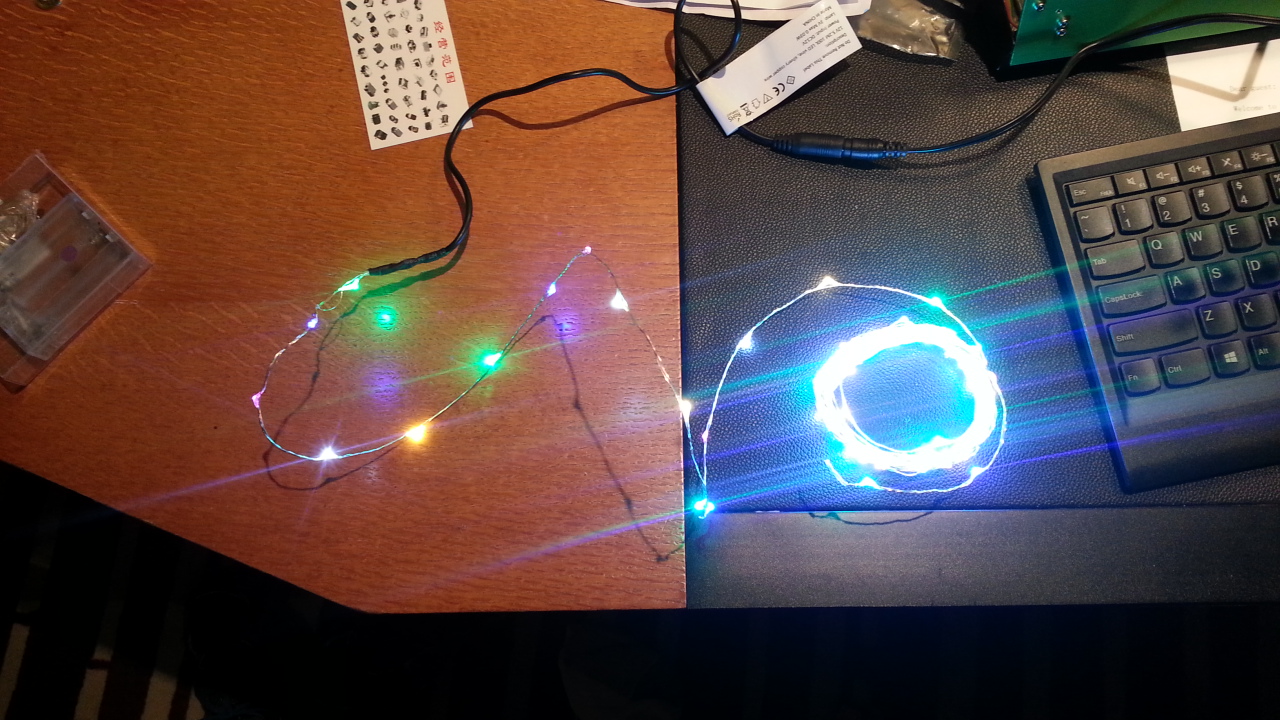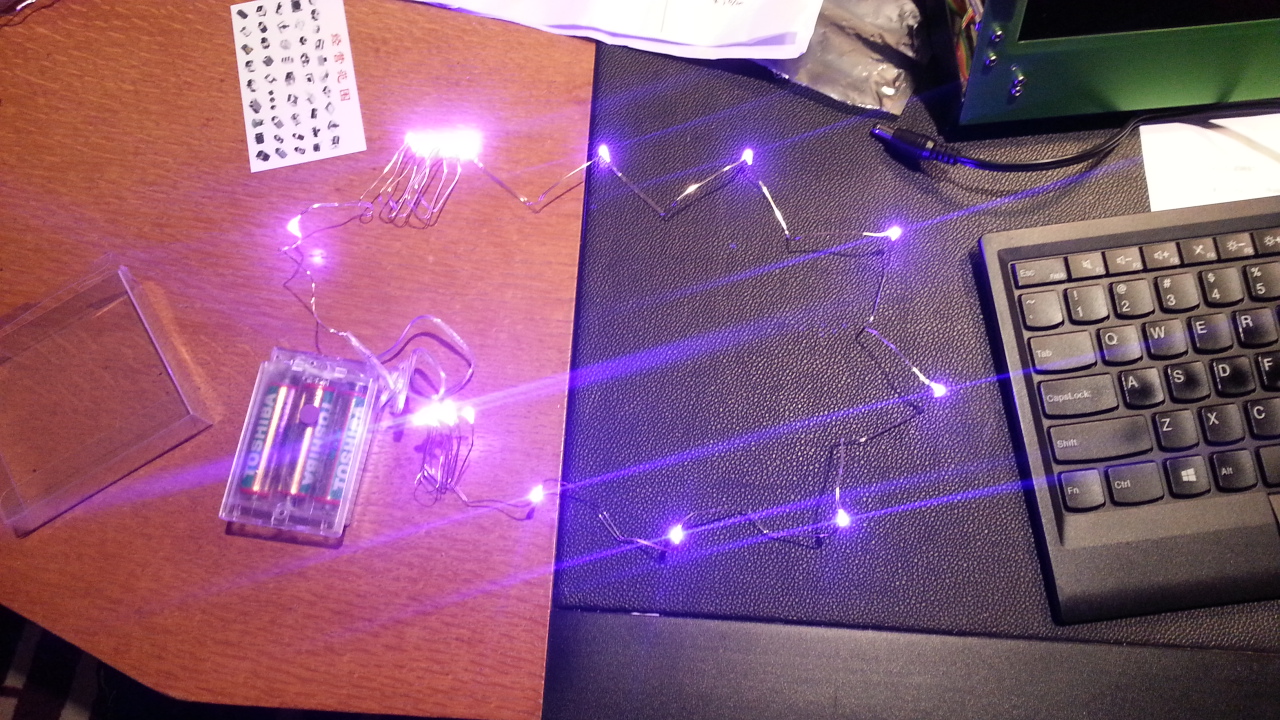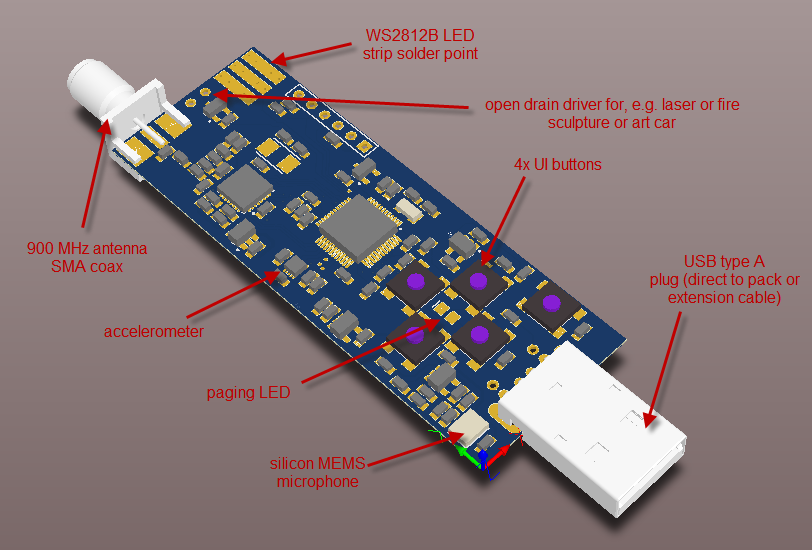Phage2014
Contents
Phage 2014 Offerings
Register your order at http://www.payitsquare.com/collect-page/37361
All prices are EXCLUSIVE of shipping. Shipping will be split across everyone who orders. Once orders are closed, we'll confirm a shipping cost. Note: shipping can be expensive from China, so if we can't get enough of an order together to make the shipping worthwhile this may not happen.
Timeline:
- orders final by end of June
- payment received by mid-July
- items shipped to US and received by 1st or 2nd week of August
LED Strips
- WS2812 LED strip, 30 LEDs/m, black backing, silicone tubing. $6.47/meter
- WS2812 LED strip, 60 LEDs/m, black backing, silicone tubing. $10.32/meter
Same as the LEDs featured at these websites:
- http://www.pololu.com/product/2547
- http://www.adafruit.com/products/1376 -- 30/meter
- http://www.adafruit.com/products/1138 -- 60/meter
Rain Tubes
"Rain tubes" create a "falling rain" effect with a string of LEDs. These come daisy-chained in packs of 10, and are powered off of 12V DC. The rainfall effect is not synchronized; when you first power on they look synchronized but the rate of falling is slightly different across all tubes so eventually it looks random-ish.
- Rain tube, 50cm long, bundle of 10, multi-color pack. $20/pack of ten
- Rain tube, 50cm long, bundle of 10, white only. $20/pack of ten

http://bunniefoo.com/bunnie/phage2014/raintube.mp4
Fairy Lights
- Fairy light, 5.2m 100 LED "vine", pastel color, powered by 12V adapter. $5.50 with 12V adapter.

- Fairy light, ~20 LED LED "vine", purple, powered by 3xAA batteries. $2, batteries not included.

Battery packs
Will only order if we can meet a minimum of 50 total packs being ordered to make the extra headache of shipping these worthwhile.
- 5V USB battery pack. 8500mAh. Dual output, 1A and 2.1A heads. Displays remaining capacity and discharge rate via LED display. $15 w/1x microUSB charger cable.
- 5V USB battery pack. 2000mAh. Single output, 1A head. No UI. $3 w/1x microUSB charger cable.
Phage Pager

Light controller and paging badge, for phage campers only. Please note quantities are limited: only 50 pieces with radio, and up to 80 pieces without radio can be made. Sign-up sheet is pending first working prototype.
Features this year include:
- Greatly reduced cost
- Version with radio, accelerometer, microphone, and LED driver: $20
- Version with just LED driver: $10
All versions include:
- STM32F microcontroller
- drive hundreds of LEDs
- multiple strip driver ports
- Possible to daisy chain to create matrix display (requires you to code up comms bus)
- Program STM32F via serial port using FTDI serial cable (same as used on Arduino)
- 4x UI butons to make it easier to change patterns and adjust brightness
- Simple form factor
- USB-A plug can plug directly into battery pack with no cable
- USB-A plug is more robust and can handle more abuse than microUSB
- USB-A plug is for power only. It does not show up as a USB device.
- 68mm x 25mm in-line form factor
Radio version includes:
- 900 MHz radio pager, compatible with 2013 badge
- SMA coax whip antenna, 1/4 wave 2" antenna provided
- Estimate 2-4x range of last year's badge
- Better performance in a crowd of people
- Single built-in diagnostic LED to indicate when being paged
- Typically combined with WS2812 belt lights for better effect
- Features open-drain driver which can power, for example, a laser mounted upward so it's easy to find people in a crowd
- Accelerometer
- Disable laser driver output when user is not standing upright
- 800Hz update rate, can work as a pedometer if someone would write software for it
- Silicon MEMS microphone (should handle dust better than electret cartridge mic)
FAQ
What configurations are recommended?
Budget
For people who can't afford much and just want to be visible at night, I'd recommend the fairy light with 20 LED vine. It's just $2 and requires 3xAA batteries. Only downside is you'll munch through AA batteries throughout the burn.
Value
For those who aren't afraid of soldering and want an economy solution, I think the base kit I'd recommend is:
- phage pager sans radio ($10)
- 1m of 30 LEDs/m strip ($6.47)
- 2000mAh battery pack ($3)
1 meter is enough to go around anyone's waist or head, and enough to encircle most of a back pack. The 2000mAh battery pack will last one night at a medium brightness setting using ~1m of 30 LEDs/meter.
Best
For those who don't mind spending a little extra and like it bright, I'd recommend:
- phage pager with radio ($20)
- 1m of 60 LEDs/m strip ($10.32)
- 8500mAh battery ($15)
imo, the 8500 mAh battery is well worth the money. This is a top-notch pack which tells you exactly how much juice you have left and how much current you're draining; with this feedback you can adjust your light pattern throughout the night to make sure you have juice to last. Also, 8500mAh will probably get you through 2-3 nights without a charge.
Few people really used more than 1m of strip last year in terms of personal lighting. If you're doing a bike, you can use about 2m. Remember, for visibility, 30 LEDs/meter is quite sufficient. People who wore 1 meter of 60 LEDs/m last year were mistaken as artwork in the deep playa because they were so bright.
Can I program the pager myself? Yes, you absolutely can program the pager yourself. The toolchain is arm-gcc and you upload a binary via a serial port using an FTDI serial cable. You'll need to solder on a header to do the upload. Unfortunately, it's just C code, no GUI or other cool stuff like that; but you do get an array of RGB pixels to operate on and a decently powerful ARM CPU.
How many LEDs can be powered off a battery pack? Number LEDs you can power from a battery pack -- the 2000mAh battery pack can output up to 1.0A. With a "reasonable" pattern (e.g. not all white) this is about a meter of LED tape at 60 LEDs/meter; or two meters at 30 LEDs/meter.
The larger pack has a 2A output, so length scales accordingly.
I will calibrate the pre-programmed LED patterns based on current draw to ensure that in any case, you can always run 1 full meter of 60 LEDs/m tape off of any configuration. The place where you can shoot yourself in the foot is if you write your own code and say, program all the LEDs to be full-on. LEDs full-on white, you can power only a dozen or so of them at a time, as they each draw around 60mA.